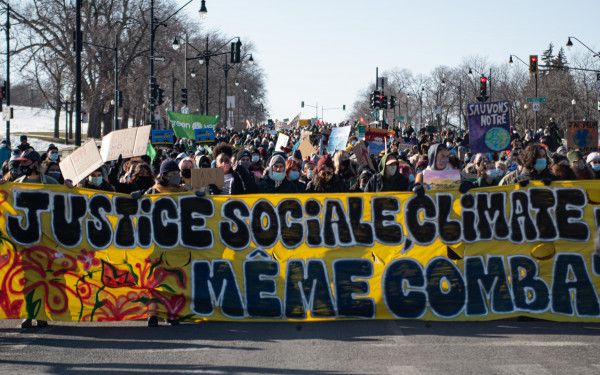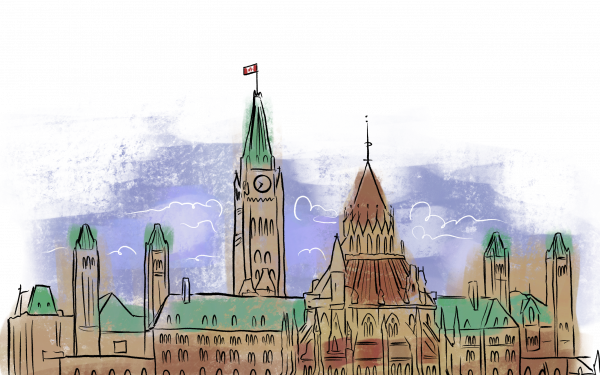The Hidden Borders of Canada
When you look at this landmass, what do you see?
Canada is marked and divided by a complex system of hidden borders. Some are real, and some are imagined—depending on whom you ask. Most of them are political, and some have legal implications; some signify victory and some defeat.
Collectively, they’ve all contributed to the way this country has taken shape over the past few hundred years.
As early as 1701, European settlers began making deals with First Nations people in what would eventually become eastern Canada. These early agreements, signed between 1701 and 1923, are considered the “Historic Treaties.”
These treaties were basically contracts that outlined the terms and conditions of the Canadian and European people’s access to land previously occupied solely by First Nations.
The earliest ones were essentially agreements set in place to ensure peaceful relations between the First Nations people and the Europeans. As time passed, however, the treaties and how they were used would change.
Instead of the more simple agreements like the early Peace and Friendship treaties, the later Historic Treaties contained more complex and far-reaching obligations between.
In 1871, as the newly formed Canadian government started to push west, the Crown began to negotiate and sign a series of agreements with the First Nations called the Numbered Treaties.
The first seven of these treaties, signed between 1871 and 1877, claimed mostly the southern and central parts of what are now the Canadian prairies. The remaining four treaties, signed between 1889 and 1921, would see large parts of the northwest claimed by the Crown as well.
In the end, the treaties would reclaim most of northern Ontario, Manitoba, Saskatchewan, Alberta, as well as parts of the Northwest Territories, the Yukon and British Columbia for the Crown.
These treaties would see First Nations people surrender the rights to their land in exchange for money, food, hunting and fishing rights, as well as clothing and medicine.
They were then given back small pieces of their land in the form of Native reserves.
Today, Native reserve land makes up only 0.2 per cent of all of Canada’s landmass.
The settling of treaties continues today with what are referred to as comprehensive land claims, as well as self-government agreements. These essentially address unfinished treaty-making business.
According to the Canadian government, there have been 24 comprehensive land claims and two self-government agreements concluded since 1973.
As of September 2012, there are 93 comprehensive land claims and self-government agreements at negotiation tables across the country—some of which have been on the table since the mid-1970s.
The Historic Treaties
Between 1701 and 1923, the British Crown, the Canadian government and First Nations representatives signed what are known as the Historic Treaties.
These began as a series of smaller treaties, established before Confederation in 1867 in what would become the Canadian east. They include the Peace and Friendship treaties in present day New Brunswick and Nova Scotia, the Upper Canada treaties and the Vancouver Island treaties, in Ontario and British Columbia, respectively.
Looking to expand its influence across the country, the Crown began a series of treaties known as the Numbered Treaties that span across most of the northern Ontario, the prairies and the northwest.
Possibly the most controversial of these was Treaty Six, signed by the Plains and Woods Cree.
The treaty was initially met with strong opposition and resistance from First Nations communities. But facing starvation after the rapid decline of the buffalo that sustained them, they were eventually forced to cede the land.
Treaty Six is also unique because it is the only treaty to grant any form of health care.
A clause was included that would have a medicine chest in the home of each Indian Agent on reserve land to fight the spread of disease. To some, this was interpreted as free health care for all, forever.
Negotiations in Quebec
The settling of treaties continues today with what are referred to as comprehensive land claim settlements, as well as self-government agreements.
Land claims are recognized under two classes: Comprehensive claims, and specific claims. Comprehensive claims are referred to as such because of their wide scope, which can include anything from land ownership, economic development and hunting and fishing rights. These types of claims are typical of areas where title to the land hasn’t been previously established by a treaty.
Specific claims deal with pointed grievances that usually have to do with the administration of land and other assets assigned under a treaty or the Indian Act.
According to the Canadian government, there are currently 93 comprehensive land claim settlements and self-government agreements at negotiation tables across the country.
Of these, there are six happening in Quebec, and of those six, four include both comprehensive land claims and self-government agreements.
Reserve Land in Canada
Canada has a total land area of 909.3 million hectares.
According to Aboriginal Affairs and Northern Development Canada, the total land base of the 2,267 Native reserves they have listed is approximately 2.6 million hectares—0.2 per cent of the total land area of Canada.

_900_545.png)
_600_832_s.png)


_1_600_375_90_s_c1.jpeg)

